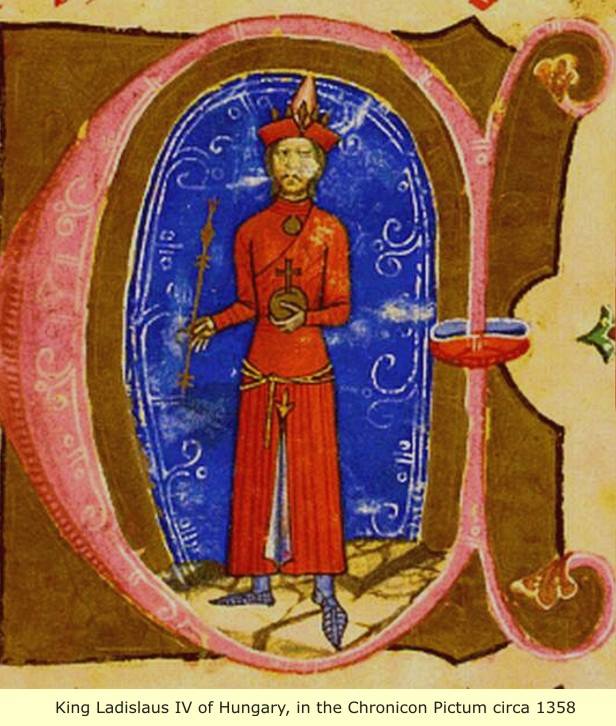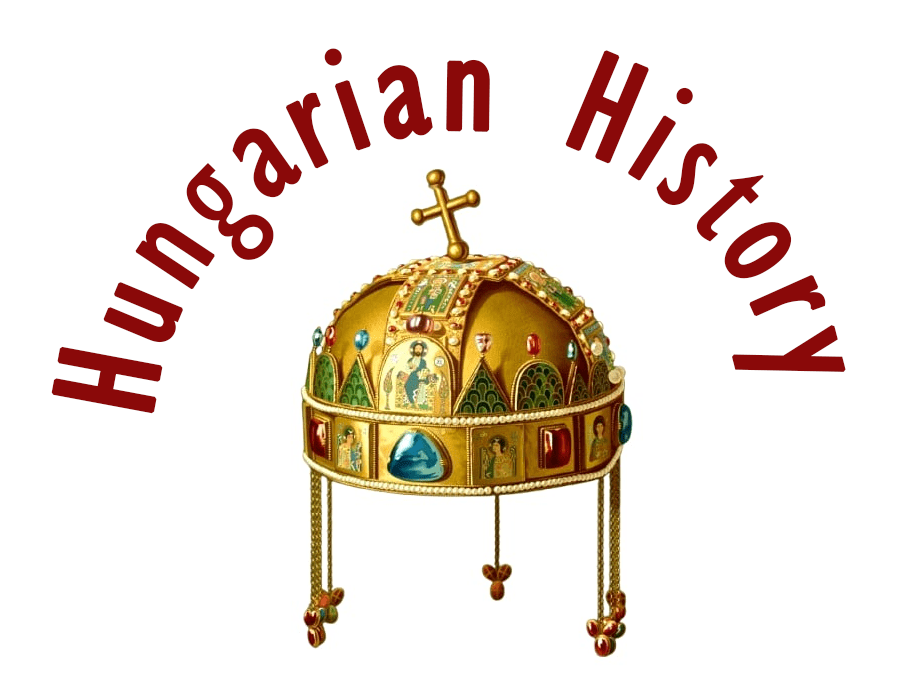
The castle of Adorján is located in the village of Szalárd (Sălard), in Bihar County, Romania. It lies 24 km northeast of Nagyvárad (Oradea), on the left bank of the Berettyó River. The settlement probably bears the name of the Hungarian chieftain Szalárd from when the Hungarians led campaigns to the west in the 9th century. On the outskirts of the village, on the bank of the Berettyó River, you can see the remains of the former Adorján castle and the ruins of the old tower. Location: https://tinyurl.com/mr3z8b3a

Adorjánvár was probably built by Country Judge Pál, the son of Écs from the Geregye family, sometime between 1236-76. Geregye Pál was a much-favored man of King Béla IV, and in 1241 he defended the Danube line against the Mongolians. He helped the king restore order in Transdanubia and Transylvania after the withdrawal of the devastating hordes and was rewarded in 1236 with vast territories in Bihar, which had been depopulated by the Mongols. The castle was built on an island on the Berettyó River and its tributaries, and the marshy area and the river provided excellent protection for the fortress. To the south of the castle lay a now ruined settlement, Adorján.

The first mention of Adorjánvár dates back to 1277, when Miklós of Kán’s family, Archbishop of Esztergom, captured it from the rebellious Geregye Miklós by siege in the name of the king. Geregye Miklós was also taken prisoner. In 1278, King László IV judged the rebels at Várad, confiscated Adorjánvár from the Geregyes, and donated it to Tamás of Borsa and his sons.

The Borsas were not loyal to the king for long, in the early spring of 1287 the sons of Comes Borsa Tamás fought on the side of the Kőszegi family against the army of King László IV in a battle. In 1290, when King László IV besieged the castle of the Borsa family in Körösszeg, it was probably on their orders that 3 Cuman assassins murdered the king in his tent.

After the death of King Laszlo IV, the sons of Borsa Tamás supported King András III in his claim to the kingship. In 1294, an armed conflict broke out between the king and the Borsa family. The Transylvanian Voivode Lóránt/Roland of Borsa took the castle of the Bishop of Várad in Fenes by force of arms. The king was already in Várad in August, and from there he marched with his army to Adorjánvár, where the castle refused to open its gates to him, and the royal army took the fortress by a bloody siege. Several charters of King András III have survived, in which he rewarded the families of his followers who were wounded or killed in the siege.

According to these, Aladár of Pécz was killed during the siege of the castle (“sub castro Adrian vocato”), and also the son of the brother of the voivode Kompolti Herchweg of Aba, Kene, named Péter. The king took the title of Voivode of Transylvania from Borsa Roland as a punishment, but he got off with a relatively light punishment and could also keep Adorjánvár, according to Zsoldos Attila, because the siege of Fenes could have been an armed solution to a feud.

After the death of King András III, the Borsa family were the supporters of King Károly Anjou I. Adorjánvár was the center of the Borsa Kopasz/Jakab estate. In 1304 he was certainly the lord of the castle, and in 1306 the Adorjánvár was ruled by Zudus, the castellan of Kopasz. In 1315, the king took away the office of Palatine from Kopasz, who rebelled against the king. At the beginning of summer 1317, the army of the Borsa family was defeated in a battle near Debrecen by Dózsa of Debrecen with the royal army, and Kopasz retreated to Adorjánvár.

King Károly I besieged Adorjánvár, and on 1 July he issued charters from there (“sub castro Adryan”) as the castle was taken by the royal army. Kopasz fled to Sólyomkő, which the royal army captured in August after starving the guards. Kopasz was taken prisoner but was not beheaded by the king. Adorjánvár became a royal castle, and Pós, a man of Dózsa Debrecen, was put in charge of it. It was the patrimony of the Comes of Szabolcs until 1349 and then became a royal estate under the reign of King Lajos I.

On 30 November 1389, Queen Mary pledged Adorjánvár with its villages and the associated benefits to the treasurers, Kusályi Jakcs György, István, and András, for two thousand gold forints, probably in exchange for her debts (“castrum nostrum reginale Adryan vocatum […] cum villis et tributis ad dictum castrum spectantibus”).

On February 14, 1395, King Zsigmond granted Adorján castle (“castrum nostrum regale Adrian”) of Bihar County to Csáky Miklós of Zsidó, Comes of Temes, and his sons for their merits. The king took in exchange from him the Csák castle of Temes County, the Csőze estate, the Kövesd castle of Krassó County, and the associated iron mines. On 17 February 1401, the king granted the castles of Körösszeg and Adorján in Bihar to Csáky Miklós and György (“quod cum castra Kereszegh et Adryan vocata in comitatu Byhoriensi”).

In 1421, the Csákys divided their estates, and the castle included the market town of Adorján, Fegyvernek, Nadántelek, Kecskehát, Borzlyuk, Kővág, Kozmafalva, Doborka, Tótalmás, Sejter and Mezőfalva, half of Kügy, all in Bihar County. In Szatmár county: the market towns of Daróc, Ákos, and Szántó, and the villages of Géres, Szilvas, Kisszántó, and Hidvég, Gyöngy. Adorján was given to Csáky György, Körösszeg to Csáky Miklós, but Csáky IV László, the guard canons of Várad also had a share. In 1463 the castellan of Adorján was Pann Ferenc who served Csáky Ferenc and in 1475 Kis Ferenc and Kerchy László. On 21 December 1490, Csáky Benedek made his testament in Adorjánvár.

At the beginning of the 16th century Adorjánvár was owned by Csáky I. Gábor, then in 1511 a part of the estate was briefly given to the Archbishop of Esztergom Bakócz Tamás as a pledge. In the struggles for Transylvania in the 1550s, the Csákys sided with Isabella, the widow of Szapolyai János, and the Bishop of Várad was on Ferdinand’s side. In 1556 Csáky Farkas and his armed men attacked the Franciscan monastery of Szalárd and killed the guardian. Bishop Zabardy Mátyás of Várad and the Comes of Bihar, together with Tahy Ferenc, with the royalist troops, tried to besiege Adorjánvár, but this did not take place because Csáky Pál opened the castle gates and joined the royal side.

Csáky Pál lost his fortune when he confronted Báthory István, Prince of Transylvania, but Csáky Dénes was the first councilor and one of the main guardians of Báthory Zsigmond for a short time after 1581. From the 1590s onwards, Csáky István held important positions. He descended from the Körösszeg branch of the family and not only reclaimed the estates but also strengthened them.

After the resignation of Báthory Zsigmond, he took part in the battle of Sellenberg on 28 October 1599 against the Voivode Michael, who was commissioned by Emperor Rudolf. His estates were confiscated, but in 1600, Voivode Michael had already arranged with Rudolf that he would not only get back Adorjánvár, but also the castle of Egeres as a donation. In 1603, he pledged a good part of his Transylvanian estates and acquired a pledge in Hungary.

In October 1604, General Belgiojoso designated Adorjánvár as a rallying point for the Imperial troops to capture the castle of Kereki, where Bocskai István, accused of disloyalty, had taken possession. After the unsuccessful siege of Kereki and the defeated battle of Álmosd-Diószeg, Belgiojoso retreated from Adorjánvár towards Rakamaz to evade the Hajdú troops of Bocskai.

According to the census of Adorján in 1625, a toll was collected on the bridges on the Berettyó river, half of which was due to Adorjánvár and half to Szentjobb. Prince Bethlen Gábor issued a certificate that widowed Mrs Csáky István and her sons István and László had divided the estates.

In 1640, Csáky László bought the castle and manor of Léva from King Ferdinand III for 180,000 forints. Csáky, to raise money, pledged his manor of Adorján together with the castle and the market town of Margitta to Prépostváry Zsigmond for 3000 gold and 16,333 thalers. According to the contract, upon Prépostváry’s death, the estates would revert to the Csáky family.

According to the Turkish traveler and writer Evlia Chelebi, when Várad was captured by the Turks in 1660, Ali Pasha Serdar ordered the capture and destruction of Adorjánvár. During the siege, the Crimean Tatars looted and burned Szalárd, and destroyed the tombs of the Csáky family.

On 20 March 1665, the children of Csáky László, the judge of the country, also divided their estates, Csáky Pál and László inherited the Adorján estate in Bihar County together with its belongings. However, the castle was not actually in the hands of the Csáky family.

On March 16, 1665, the Transylvanian Prince Apafi Mihály instructed Bánffy Dénes, who was traveling to Vienna, to request the following from the Emperor:
“that which provinces, castles, and villages were seized from us (i.e. from the Transylvanians) against the credentials of Ali Pasha, given when he took the castle of Castle of Várad, be returned to us by his Majesty’s gracious interposition, namely Paplező [Papmező], TeIegd, Belényes, Sólyomkő, Kereki, Keresztszeg, Szalonta, Sarkad, Adorján, Bajom, Zsáka, Szentjób, Petrelin, Palota, in addition to the whole of the counties of Bihar, Kraszna and Belsőszolnok, Kolos, part of the counties of Kolos, Doboka, and Belsőszolnok, and the parts of the counties of Arad, Zerin, Békés, and Zaránd which have been held by our fathers before Jenő was in Turkish hands.”.

The Prince of Transylvania requested an adjustment of the border. The ruined castle was occupied by the Transylvanians and guarded by them. In 1665, Mohamed Pasha of Várad visited the castle during his campaign against the Hajdúság region. The Sultan had previously ordered the Pasha to occupy Adorján:
“You, who are the leader of Várad, Mohammed Pasha, when my high document comes to you, how many soldiers are in the Ejálet, go with them and at the request of our friend the German Emperor, destroy the castle of Székelyhíd, not far from Várad, in the district of Hajdúság in Transylvania, and level it to the ground. The castle of Adorján in Transylvania, which was left behind when our Várad was taken, shall also be destroyed, therefore, even if the king of Transylvania has placed troops in it, at the request of the German Emperor, destroy this castle of Adorján also.”

Chelebi also reports on the brief siege:
“The castle was in ruins on a high mound, and its precincts were destined to be the domain of the Vizier of Várad. However, recently, contrary to the peace, King Apafi Mihály of Transylvania had this castle of Kis-Adorján repaired and had troops stationed there, which was reported to the Sultan. […] Mohammed Pasha therefore went in haste under the castle, and without giving the castle time or mercy, sent all the soldiers of the faith into siege before sunrise. Although there were only four pieces of heavy cannon, they reached the heart of the castle, and in some places, the bastions were blown up. The infidels, seeing the castle in ruins, said:
“Mercy, O chosen one of the armies of the Ottoman house!” and indeed, towards Wednesday, they hoisted the white flag of mercy on the bastions and, lowering their cross badges, surrendered the castle by treaty. The infidels went in peace to the castle of Pocsaj, and the Islamic army marched into the castle and, according to the order of the pherman of Shehryry, leveled the walls of the castle in two days, and sent the equipment, cannons, and other implements of war to the castle of Várad.”

After the reoccupation of Bihar County between 1686 and 1692, Adorján was returned to the Csáky family, but they did not rebuild the ruined castle. In 1698, first Csáky László and then in September 1701 Csáky István were confirmed by Emperor Léopold in an honorary charter as the owners of Margitta and Szalárd and other villages. On July 13, 1699, Csáky László, the chief captain of Léva, sold several of his Transylvanian (Szurdok, Egeres) and Bihar (Adorján, Margitta) estates to Csáky István for 50,000 forints.

On November 7, 1724, King Charles III granted the Csáky family the right to exercise the right of execution in Adorján and its surroundings. According to a document of the same year, the stones of the castle were used to repair the reformed church in Szalárd.

In 1888 Bunyitay Vince wrote about the ruins:
“”There is only a little bit of the castle left here and there. Its square old tower, though stunted and split in two, stood until recent times; but in 1864, during a summer storm, lightning struck it and more than half of the building, which had seen so many centuries, collapsed. Apart from this, only a ruin, but also a tall one, still stands, probably the remains of the former lords’ dwelling, known as the palace. Otherwise, the whole castle was a brick building, originally surrounded by a strong stone wall, but this has now fallen all around. The place of the castle itself is a small mound of land, today much narrower than before, because recently, during the regulation of the Berettyó River, the new bed of the river was led to the southern side, and a good part of the side was cut off…”

Thus, several parts of the ruined castle still existed at the end of the 19th century (2nd military survey). The interior of the castle was extensively remodeled when the Berettyó River was regulated, and many details disappeared forever. The wall, which still stands today, is 8 m high, 2.8 x 3.0 m long, and has a 1.70 m thick wall, and was saved in 2009 during a partial conservation project. At that time, an excavation was carried out to recover finds from the castle, which provided evidence of several periods of construction. The 13th-century castle had a residential tower, probably surrounded by a palisade.

The Borsa and later the Csáky families extended and rebuilt it for their convenience. “The presence of a large number of Renaissance stove tiles and a small number of stone carvings suggests that during the 17th century, some of the representative buildings of the fortress were rebuilt, such as the palace or the castle chapel, but the Apafi reconstruction could certainly be an indication of a major investment when the entire castle was restored using the debris of earlier demolitions. The memento of this is still defiantly standing on the wall” – wrote Mihálka Nándor.

In 1910, 2349 of the 2404 inhabitants of Szalárd were Hungarians. Until the Treaty of Trianon, it was the seat of the Szalárd district of Bihar County. In 1992 it had a population of 4088 inhabitants, of which 2941 were Hungarians, 921 Romanians, 220 Gypsies and 1 German.
Source: the Hungarian Wikipedia and https://varlexikon.hu/adorjanvar

Dear Readers, I can only make this content available through small donations or by selling my books or T-shirts:
Please, support me with a coffee here: https://www.buymeacoffee.com/duhoxoxa
You can check out my books on Amazon or Draft2Digital, they are available in hardcover, paperback, or ebook:
https://www.amazon.com/dp/198020490X or at https://books2read.com/b/boYd81

My work can also be followed and supported on Patreon: Become a Patron!http://Become a Patron!
Become a Patron! and donations can be sent by PayPal, too: https://tinyurl.com/yknsvbk7


https://hungarianottomanwars.myspreadshop.com/all
Subscribe to my newsletter here: https://tinyurl.com/4jdjbfkn
Here are more pictures of Adorjánvár:

























